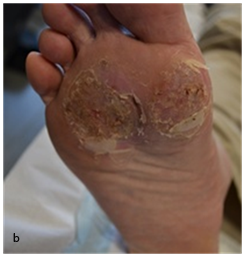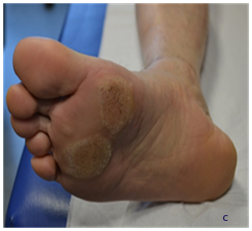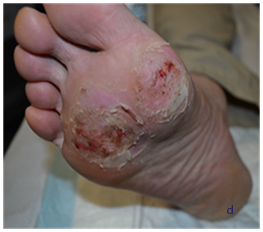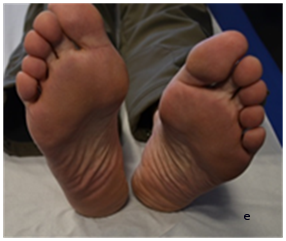Journal of
eISSN: 2574-9943


Case Report Volume 2 Issue 1
Department of Dermatology, Paul Sabatier University, France
Correspondence: Salama Hegazy, Department of Dermatology, Paul Sabatier University and Toulouse University Hospital, Toulouse, France
Received: December 08, 2017 | Published: January 24, 2018
Citation: Hegazy S, konstantinou MP, Paul C, et al. Treatment of warts with topical curettage and PDL. J Dermat Cosmetol. 2018;2(1):23-24. DOI: 10.15406/jdc.2018.02.00031
Cutaneous warts are benign epidermal proliferations caused by human Papilloma virus infection. The treatment is challenging despite the fact that there are several treatments because any therapy was not established as gold standard. Although therapeutic abstinence is sometimes advisable, more patients request active treatment because of social stigma or discomfort. More active treatments have specific disadvantages and side effects. Some studies have used pulsed dye lasers to treat cutaneous warts and a recent review noted a very large ranging of rate response. In this report we presented a case of successfully removed resistant plantar warts using 3 sessions of pulsed dye laser associated with a topical curettage.
Keywords: epithelial neoplasms, skin, photodermal, cryotherapy sessions, PDL
Warts are benign epithelial neoplasms of the skin and mucosa resulting from human Papilloma virus (HPV) infection. They are a common dermatologic complaint, with an estimated incidence of 10% in children and young adults.1 The treatment is challenging and there is no single therapy established as completely curative.2 In this report we presented a case of successfully removed resistant plantar warts using pulsed dye laser associated with chemical and mechanic curettage.
A 70 years man, without immunosuppression history, has consulted to our department with two large mosaic warts on the feet (Figure 1a). This lesion persisted for several years in despite of a performed treatment with many cryotherapy sessions (Figure 1a). We proposed a treatment combining 3 sessions of pulsed dye laser (PDL) with chemical and mechanic curettage. Prior to every laser sessions, warts were treated with topical keratolytic (a combination of 16% lactic and 16% salicylic acids in collodion base) and were peeled with a surgical blade (Figure 1b). The following parameters were used: fluency of 10 J/cm2, pulse duration of 0.5 ms, and a spot size of 7 mm. Two slightly overlapping passes were applied per each wart and 1-mm margin on the surrounding skin. Standardized air-cooling (Zimmer air cooler) was administered during treatment for thermal protection of the epidermis. An immediate purpuric endpoint is achieved (Figure 1c).
After 3 sessions at 1-month intervals the feet were totally cleared of the wart. The patient tolerated the treatment well and there were no scars or other adverse effects. The patient’s status was checked one month after the third session, the feet were still clear and there was no sign of recurrence of the wart (Figure 1e).





Figure 1
Here we reported a case of resistant large mosaic warts on the feet treated efficacy and safe with associated topical curettage and PDL treatment. No recurrence was noted to one months of follow-up. Several treatments are available for treatment of warts without gold standard established therapy neither for disappearance or to prevent recurrence.3 Most therapeutic methods have specific disadvantages and side effects as pain and long recovery periods. Topical management requires the application of topical drugs for long durations and treatment success is highly dependent on patient compliance. Ideally, treatment should be simple with a low risk of adverse effects.4,5 Many studies have used 585-nm PDL with the wart blood vessels as the target tissue.6 As the hemoglobin heats up, thermal energy is dissipated to surrounding tissues, leading to cauterization of blood vessels (photo dermal or photomechanical destruction).7 This is because hemoglobin in blood has strong absorption peaks at wavelengths ranging from 585 to 595 nm).8 In literature data, the response rates seen in peripheral warts (involving the hands and feet) were very variable, ranging between 48% and 95%.9 This large variation could be linked by the ability of the laser waves to penetration in papillary dermis-to destroy blood vessels-fact probably conditioned by thickness of the epidermis. Chemical and mechanical curettages that we used in our patient play an important role in the penetration of laser waves.
PDL associated with chemical and mechanical curettage is an effective, safe and well tolerated treatment for resistant warts.
None.
The author declares no conflicts of interest.

©2018 Hegazy, et al. This is an open access article distributed under the terms of the, which permits unrestricted use, distribution, and build upon your work non-commercially.